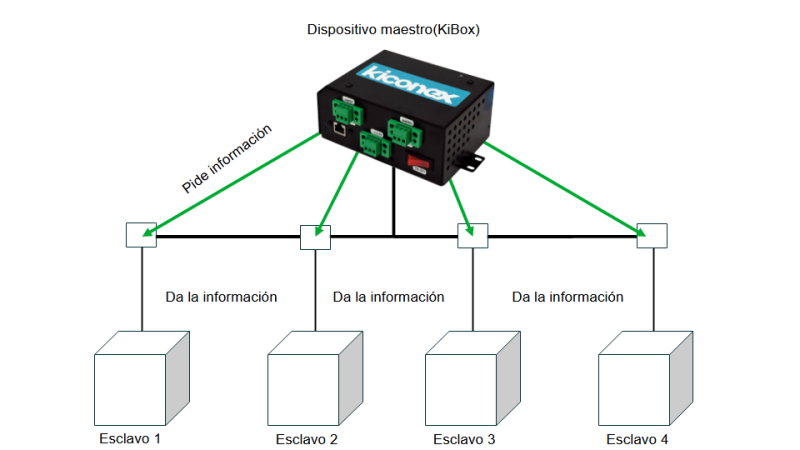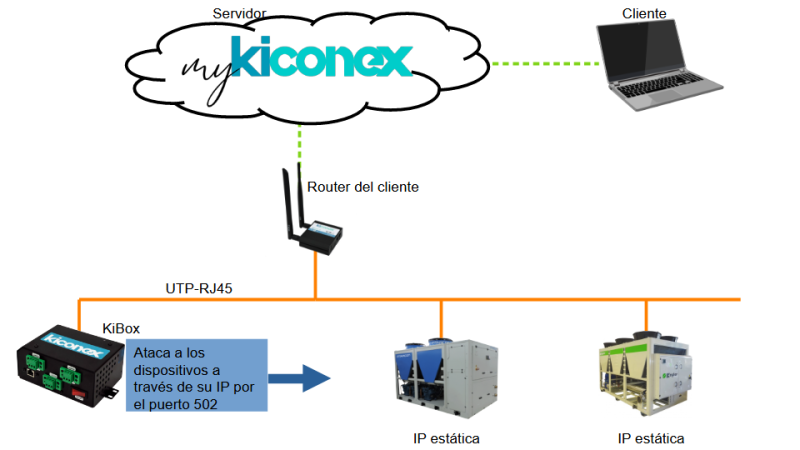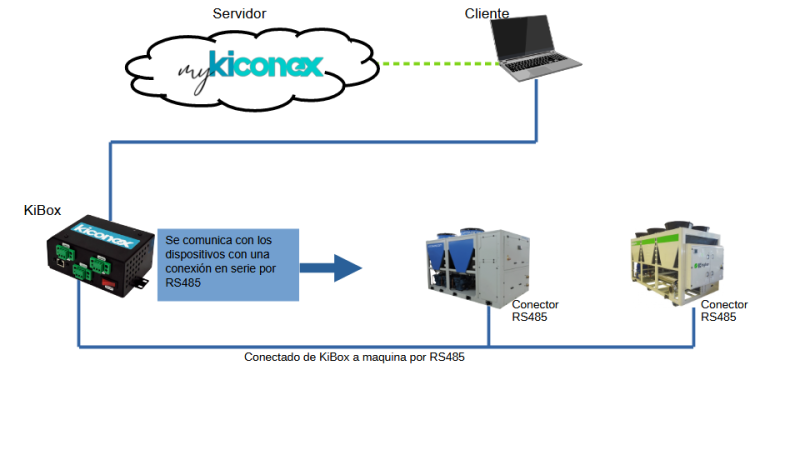Modbus-protocol/en
Protocolo Modbus
What is Modbus Protocol?
Modbus is a communication protocol used to transmit information over serial networks and uses a master/slave architecture.
Master-slave concept in a Modbus network.
In a Modbus network, the master/slave architecture is used, since it makes communication more convenient and reliable.
The master-slave concept is very simple, it consists of a device that requests information (master) and one or more devices that offer this information (slave).
In the case of kiconex, the master device would be the kiBox, and the slave devices would be the devices connected to it, from which it requests the information.

Tipos de protocolos Modbus que utilizamos: Modbus TCP y Modbus RTU.
What is Modbus TCP protocol?
Modbus TCP is a communication protocol designed to allow industrial equipment such as PLCs, computers, motor drivers and other types of physical input/output devices to communicate over an Internet network using port 502 typically.
For this communication to not fail, the devices will have to have a Modbus address and a static IP different from the other devices.
Here is an example of how this protocol works on a network:

What is the Modbus RTU protocol?
Modbus RTU is a communication protocol that allows data exchange between logic controllers and computers.
These devices communicate and exchange information via serial connection and must have a different Modbus address between their devices and a data transfer configuration: speed, data bits, parity, stop bits (depending on the specifications of the device, manufacturer, etc.).
Here is an example of how this protocol works on a network:

